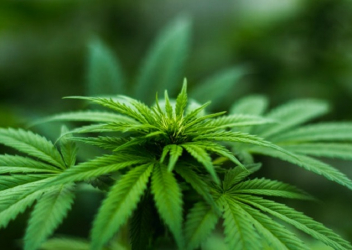Research In Action
Research In Action
Breadcrumb

The socio-political climate surrounding the use and accessibility of cannabis products has rapidly evolved in recent years. With it, there has been a sharp increase in young children unintentionally ingesting these products, often with significant consequences. But what about intentional use of these substances among adolescents? The US saw a significant increase in self-reported marijuana use by teenagers between 2017-2020, with 35% of 12th graders and 28% of 10th graders surveyed reporting marijuana use in the past year.
The increase in use is compounded by an increase in drug strength. With increasing availability of both selectively bred high-potency marijuana strains, and the manufacture of other high-concentration THC products (tetrahydrocannabinol, the main psychoactive ingredient of marijuana), we are seeing a dramatic increase in patients reporting negative side effects associated with cannabis use.
Cannabinoid Hyperemesis Syndrome: A Cycle of Highs and Lows
Cannabinoid hyperemesis syndrome (CHS) has only reached public attention in the past 20 years and, and for some, remains a controversial diagnosis. While cannabis at low doses is often associated with reducing nausea, high doses of THC can have the opposite effect.
CHS typically occurs in 3 phases:
- Prodromal phase: long lasting (weeks to months) with continued THC use, characterized by non-specific nausea and abdominal pain.
- Hyperemetic phase: intense bouts of nausea and vomiting. May be associated with marked weight loss and dehydration. This is typically when patients present to medical care. It is during this phase where we see the most significant symptoms, including changes in electrolytes, and injuries to the esophagus and kidneys.
- Recovery phase: can span days to months, a relative period of wellness.
We know that we’re seeing more CHS cases; between 2006 – 2013 the prevalence of cases increased from 2.3 to 13.3 / 100,000 ED visits, and those numbers may still be an underestimate. Reasons for the rise in number are likely not only due to increased THC strength and availability but also due to some improved recognition by patients and clinicians. Despite the rising numbers, CHS still may be under-recognized and misdiagnosed given the non-specific pattern of symptoms, a lack of standardized diagnostic criteria, a reluctance among adolescents to reveal the extent of THC, and less than optimal treatment strategies.
Strategies to Improvement Management of CHS
To improve management of CHS and to better meet patient needs, we recommend:
- Continue to advance public and medical education surrounding CHS
- Develop evidence-based diagnostic criteria relevant to pediatric patients. The current criteria, created exclusively for adults, is a good first step, but remains limited in scope.
- Improve electronic documentation to improve public health monitoring.
- Continue ongoing research into the physiological basis of CHS
- Continue ongoing research into effective treatment strategies for the hyperemetic phase of CHS.
Of course, having non-judgmental discussions with adolescents about marijuana and THC use will inform care of CHS. Clinicians should avoid bias and diagnostic anchoring (sticking with an initial impression even when new evidence becomes available) when evaluating adolescents with vomiting and marijuana use. Patients should feel comfortable that all potential causes are being thoroughly considered.
Injury Prevention: A Joint Effort
Clinicians need to evolve as marijuana laws and attitudes change and as drug accessibility increases. Motivational interviewing is a promising technique to assist adolescents in making good self-health decisions related to drug use. Parents and medical providers can seek opportunities to discuss THC use with teenagers and help them understand the risks. Together they can explore that:
- Teens are a unique group with actively developing brains that can be particularly sensitive to the effects of marijuana, alcohol, and other drugs.
- Messages and advertisements surrounding marijuana can often be mixed and misleading and often don’t provide all the information required to make a true personal risk assessment.
- The concentration of the intoxicating substance – THC – varies by product, and it can be easy to take too much. This can be particularly true for “dabbing extracts”, THC electronic vape liquids, and edible products.
- If a teen is using substances, ask why! Curiosity and exploration are common, but so are anxiety and stress.




